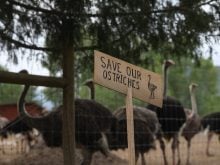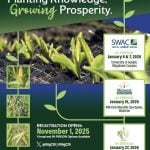Billions of investment dollars are flowing into the prairie agri-food sector in the wake of the demise of grain export subsidies, according to an Agriculture Canada report.
Some say that’s a vindication of the controversial decision to end freight rate subsidies in 1995 and shows that those who argued that the end of the transportation subsidy would benefit the prairie economy were right.
However, others counter that while the investment may be good news for local communities and the region’s economy in general, it’s not necessarily helping farmers.
Read Also

VIDEO: Agritechnica Day 4: Robots and more robots, Nexat loves Canada and the trouble with tariffs
Agritechnica Day 4: Robots and more robots, Nexat loves Canada and the trouble with tariffs.
“The economy may be benefitting, but it’s difficult to show in any clear systematic way that farmers are benefitting,” said Hartley Furtan, an agricultural economist with the University of Saskatchewan.
If increased agri-food processing benefits the general economy, then that’s good for farmers as taxpayers and citizens, he said.
“But will their farm income go up from it? Not necessarily.”
National Farmers Union president Cory Ollikka said value-added investment is a great idea, but it it isn’t working for farmers.
“If farmers were making more money, I’d say it’s great,” he said in an interview. “But statistics show net farm income is declining at the same time.”
The government report says that during the 12 months ending May 1998, investments worth more than $2.3 billion were announced for a variety of projects in the three prairie provinces, ranging from hog barns and feed mills to meat processing and potato plants.
Alex Milton, a policy development officer with Agriculture Canada’s grain policy directorate, came up with that number by adding up the value of all agriculture-related projects announced during the year.
In an interview, he cautioned that not all of the announced projects will necessarily come to fruition. And he said no analysis was done to compare the $2.3 billion total with any previous 12-month periods.
He said the project, which also involved an analysis of changes in cropping patterns and on-farm diversification, was prompted by curiosity about whether the predicted benefits from ending the freight subsidies had actually come about.
“Certainly one of the announced intentions of the removal of the Western Grain Transportation Act was that we’d see an increase in processing of grain in the areas most affected by increased transportation rates,” he said.
Milton said figures from Statistics Canada and Industry Canada show that the prairie provinces have led the nation in food processing growth by a considerable margin in recent years.
Milton said achieving ambitious export goals set by government and industry will require even more growth in agri-food processing on the Prairies, particularly in higher-valued products which are the area of greatest growth.
“For example the market is there for new crops and for taking traditional crops and making new uses out of them,” he said.
He doesn’t expect the tough times in the agriculture industry will discourage companies from continuing to invest in new processing ventures.
“With the mergers and joint ventures we’re seeing, there might be new opportunities that only size can offer, with access to capital and economies of scale.”
Ken Stickland, an Alberta-based consultant and long-time campaigner for an end to grain transportation subsidies, said the investment boom is a direct result of the removal of those subsidies.
While there are still some “institutional” barriers to value-added processing, those are breaking down as well.
“People may argue that it’s not fast enough and far enough, but without changes in the Crow and without a change in the Canadian Wheat Board’s attitude, outfits like API would not have come into being,” he said.
(API Grain Processors Ltd. is a one-year-old Red Deer, Alta., firm that fractionates wheat and produces bakery flour, high-quality gluten, fuel-grade ethanol and livestock feed.)
Stickland is particularly encouraged by what he calls the “depth” of the investment taking place, moving “further up the value chain” into new food and industrial products.
He’s also pleased that many of the plants are fairly small “grass roots” ventures, funded by local investors who often have a larger established firm as partner.
However, the talk of new investment and new products and new export opportunities arising from the end of the WGTA doesn’t impress NFU president Ollikka.
“We’re not anti-value-added,” he said. “But a single-minded focus on that alone isn’t going to solve our problems.”
Furtan said having a feed mill or hog barn down the road doesn’t necessarily provide any advantage to grain farmers.
If the commodity the farmer is selling is also traded, he said, then the price will be the same as the export price.
But Stickland said having a local processor tends to stabilize the price received by farmers.
Why food processing is flourishing
A study by consultant KPMG has cited several key factors for the resurgence of food processing in Western Canada:
- The end of the WGTA subsidies.
- More diversification in farm production.
- International trade agreements.
- Favorable exchange rates.
- Growing demand for quality food from Asia-Pacific and Latin America.
- Increased interest in community-based investment.
- Government programs designed to assist value-added industries.














